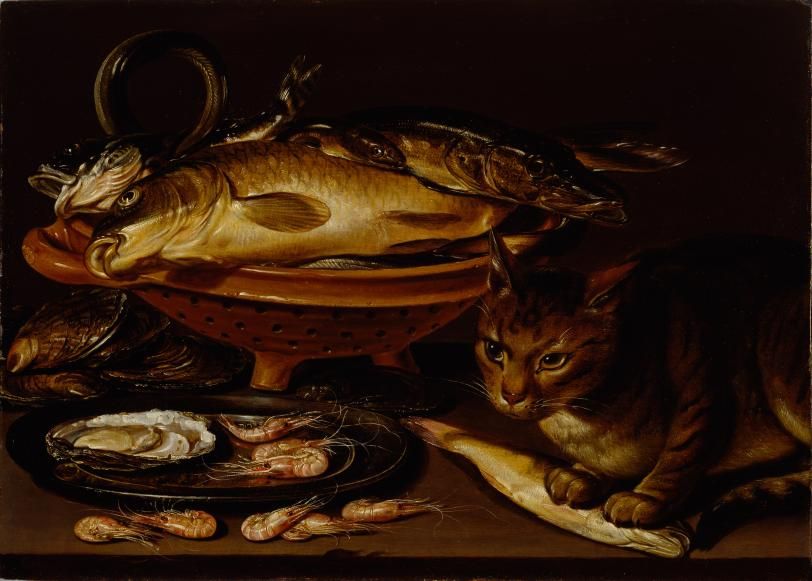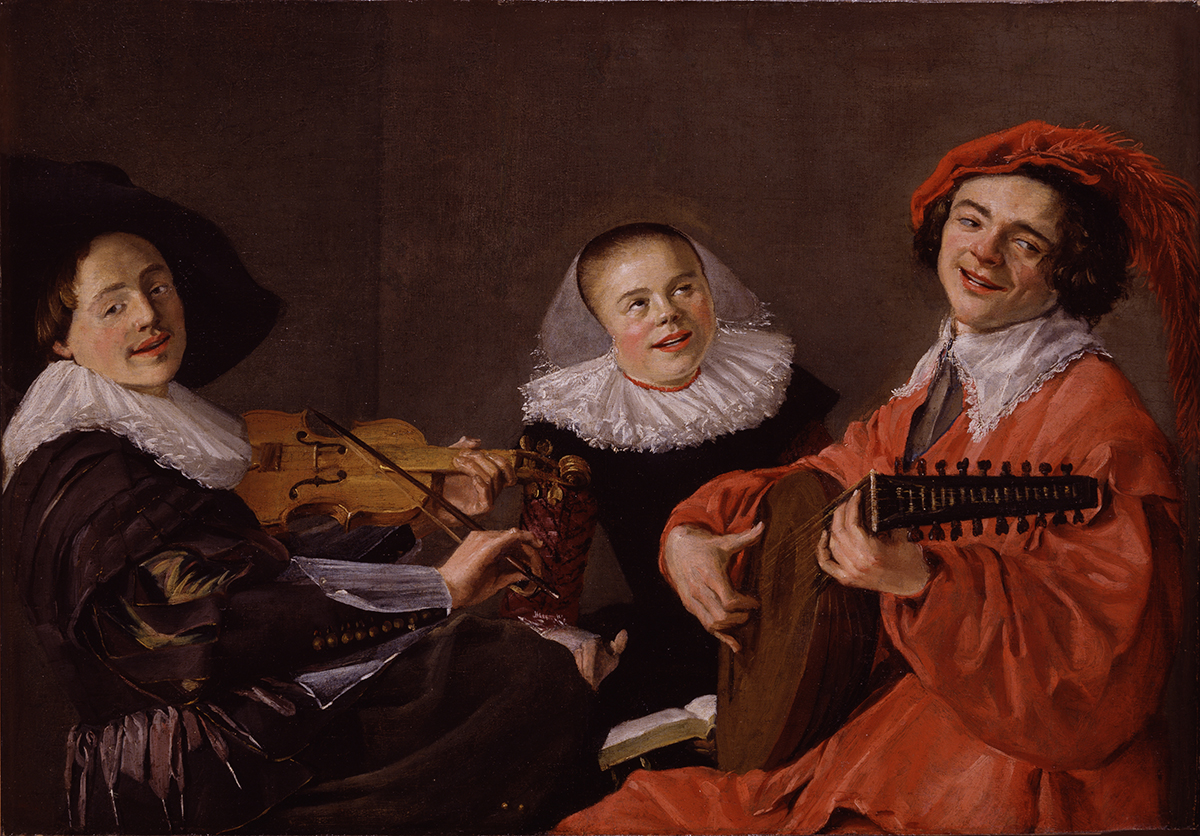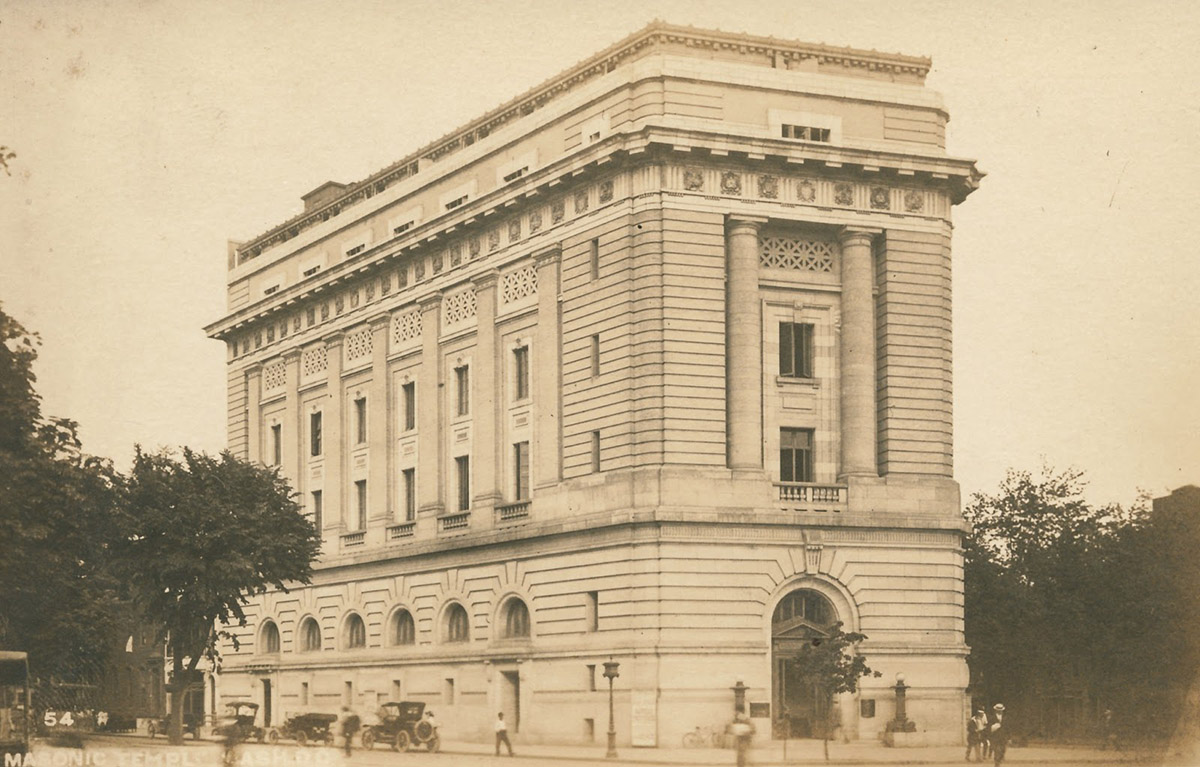
National Museum of Women in the Arts
The first museum in the world to focus solely on the contributions of women artists, the National Museum of Women in the Arts has exhibited works by influential artists of all styles and periods.
In my view . . . art is about beauty. Art reflects our shared humanity, the traits, talents, and qualities that make us human. Art transcends politics, gender, color, religion, age, and nationality. Art is the great unifier.
Wilhelmina Holladay
The National Museum for Women in the Arts is an institution that is—much like its founder, Wilhelmina Holladay—unique. The first (and currently, the only) museum in the world to focus solely on the contributions of women artists, the Washington institution has exhibited works by influential artists of all styles and periods, from those by Marie Antoinette’s court painter, Élisabeth Vigée Le Brun, to those by Tony Award–winning director and costume designer Julie Taymor.
An Early Education
Wilhelmina Cole Holladay was born Wilhelmina Cole on October 10, 1922, in a small town in upstate New York.Wilhelmina Holladay, interview by Krystyna Wasserman, August 17–September 23, 2005. Archives of American Art, Smithsonian Institution. The structure of her early life was determined by activities undertaken alongside family members—her grandfather ate breakfast with her each morning, her brother taught her to golf, and her grandmother fostered in her a lifelong appreciation of beauty. Reflecting on her childhood, Holladay says,
I had a grandmother who taught me aesthetics and she said, “Now here is an orange. The orange is beautiful. You've got to recognize beauty. Now why is this orange beautiful? Is it the softness of its skin? Is it the color? Is it the smell? Why is the orange beautiful? Because it is beautiful. And you have got learn to recognize beauty.”Wilhelmina Holladay, interview by Priyanka Menon, October 18, 2016.
After graduating from high school, she matriculated at Elmira College to study business administration and art history, taking a number of courses from art historian Donald Lord Finlayson. From there, she went to Paris to study art history, returning to the United States to work as a secretary in the Pentagon and the Chinese Embassy (including, for a time, as a social secretary for Madame Chiang Kai-shek).Holladay, interview by Wasserman.
On September 27, 1946, at the age of twenty-four, Wilhelmina Cole married Wallace Holladay. Holladay had just finished serving as naval officer and was preparing to begin a career as an architect. He, like his wife, was a lover of art.
The Collection Begins
Compared to the likes of William Corcoran or Paul Mellon, Wilhelmina Holladay had a relatively modest start as an art collector. She bought her first painting at an Arlington high school art fair, a $100 piece to hang on the walls of her new home in McLean, Virginia.
But her engagement with art extended beyond the purchasing of pieces. After the birth of her children, she started work as a part-time tour guide and gift shop assistant at the National Gallery of Art. Here, Holladay honed her aesthetic tastes, building on the knowledge she had developed as a child and college student. She discovered favorite artists and styles. And though she could not afford original works, she bought a number of posters, which she framed and hung in her home. When a Renoir print went on sale for $200, Holladay bought it—to prove to herself that “[I] could own quality art by important artists.”Wilhelmina Cole Holladay, A Museum of Their Own (New York: Abbeville Press), 40.
Finding a “Focus”
Holladay credits her entrance into the world of high-stakes art collecting to the guidance of an old friend, Richard Brown Baker. Baker was himself an astute collector and amassed a collection that included works by Jackson Pollock, Roy Lichtenstein, and Andy Warhol.Robert Smitha, “Richard Brown Baker, Collector and Donor of Contemporary Art, Dies at 89,” New York Times, January 27, 2002. Noticing the couple’s increasing appetite for art, Baker advised Holladay and her husband to collect with a focus—in a letter to Holladay, he counsels that “a collection, whether personal or even institutional, gains power through sharpening its focus.”Holladay, A Museum of Their Own, 21.
The couple were slow to yield to Baker’s instruction. They relished the freedom that came with an unfocused collection, the ability to buy whatever pleased them. They wanted to collect without limits.
Clara Peeters
The turning point came when they encountered a remarkable still-life at the National Museum of Austria. After coming across the same artist’s work again at the Prado, Holladay resolved to research the artist upon her return to the United States. Much to her surprise, however, the artist—a seventeenth-century Flemish painter named Clara Peeters—was absent from the source books to which Holladay ordinarily turned. Further inspection yielded an even more startling result. None of the prominent art history books of the time, including the leading textbook, H. W. Janson’s Art History, featured a single woman artist.
Following this revelation, the couple decided then to focus their collecting to highlight the contributions of women to the history of art. Here, they found precisely the balance between freedom and focus they desired. They could buy a watercolor or sculpture or oil painting as they pleased, all the while building a coherent collection. Their collection soon grew to include works by Clara Peeters, Angelica Kauffmann, and Judith Leyster. “It's not that we want to compare [women artists] with men, or say they are lesser or greater,” Holladay says of her collection, “but that they are, they exist.”Sarah Booth Conroy, “Wilhemina Holladay’s Plan for a Center That Will Fill the Gap In The History of Art,” Washington Post, November 4, 1982.


From Collection to Museum
Ownership of a vast collection of art only partially satisfied Holladay. She saw art as an inherently public good. “I truly feel that the arts are meant to be shared . . . you cannot own anything that someone has created. You can only be privileged to enjoy it. . . . There is a longevity of great art that has very little to do with the individuals who for a time during their life possessed it.”Holladay, interview by Wasserman.
Moving from this philosophy to the creation of museum, however, took considerable effort and outside encouragement. “I cannot remember the moment that the specific, concrete idea of a museum came into being,” Holladay writes, “[but] I can identify the idea’s godmother: Nancy Hanks, a friend of mine who became a practical advisor.”Holladay, A Museum of Their Own, 45.
A Founding Committee Formed
Nancy Hanks was chairwoman of the National Endowment for the Arts from 1969 to 1977.Carla Hall, “Nancy Hanks’ Gentle Persuasion,” Washington Post, January 10, 1983. Known as an intrepid political maneuverer and effective lobbyist for the arts, Hanks greatly expanded the budget and purview of the NEA during her tenure. Shortly after she began collecting, Holladay recalls a conversation with Hanks:
Nancy Hanks and I were having dinner and she said, “Boy, what you’ve done to me. Now, I have to visit every museum because of my position and the first thing I say is what do you have by a woman. Do you realize not one museum in our country has anything by women?”
Though Hanks had initially suggested the idea of Holladay founding a museum dedicated to highlighting the work of women artists in jest, both Holladay and she eventually saw the possibility as a serious one. A founding committee—which included prominent sculptor Louise Nevelson, designer Diane von Frustenberg, and prominent philanthropist and health activist Mary Lasker—was formed to see the idea to fruition.Sarah Booth Conroy, “The Founding Force of Wilhelmina Holladay,” Washington Post, February 15, 1987. In 1981, the National Museum for Women in the Arts was established as a nonprofit museum.“Our History,” National Museum for Women in the Arts, accessed February 2, 2017, https://nmwa.org/about/our-history.
Finding a Home

The first iteration of the NMWA was based out of the Holladays’ Georgetown home, which she opened to the public for tours of the museum’s collection. As interest in the “Holladay collection” increased, the NMWA relocated to Connecticut Avenue and once again to Macarthur Boulevard. Both Holladay and her donors, however, saw the need to secure a lasting home for the collection.
They found such a home in the unlikeliest of places. When Holladay first visited the museum’s current location on New York Avenue, she balked. A former Masonic temple, the building had fallen into disrepair—its primary occupants were “rats as big as cats”—and the surrounding neighborhood was in a similar state of neglect. Holladay could not stomach the thought of moving the NMWA next door to a pornography studio. “Saner heads prevailed,” though, and the building was bought for five million dollars and renovated for another eight million.Holladay, interview by Wasserman and Holladay, A Museum of Their Own, 63. Two and a half years later, the renovations were finished. Today, it stands as an iconic symbol of the NMWA and has won multiple architectural awards.“Fact Sheet,” National Museum for Women in the Arts, accessed February 2, 2017, https://nmwa.org/fact-sheet.
A Global Reach
Holladay conceived of her museum as serving an expansive community. “From the very beginning I didn't want it to be specifically a Washington museum,” she explains. “I wanted it to serve all women and knew that if we were going to accomplish our goal of educating people about women we had to go further than just Washington, D.C.”Holladay, interview by Wasserman.
To this end, the NMWA created “state” committees across the country. The first of these was located in Texas. Holladay herself traveled across the state to raise awareness (and money) for the nascent museum. Her efforts paid off. Committees soon appeared in nineteen other states as well as France, Italy, India, and the United Kingdom. The museum boasted sixty thousand members at the time of its opening, with members from all fifty states as well as countries across the world.
Holladay also believed that the name of the museum should reflect its ambitions. She insisted on naming the museum the National Museum for Women in the Arts, though at the time, all other “National” museums were federally run, Smithsonian-affiliated institutions. When a Smithsonian staff member approached Holladay to express opposition to the idea of a private museum bearing the “National” title, she fired back, citing examples of the National Car Rental and the National Organization of Women. “I said [to the Smithsonian employee] that that word is used with great ease,” and she would be among its users.
A Warm Public Reception
The National Museum of Women in the Arts officially opened the doors of its permanent home to the public on April 7, 1987.Holladay, A Museum of Their Own, 9. The exhibit American Women Artists: 1830–1930, curated by the prominent art historian Eleanor Tufts, was on display. Second Lady Barbara Bush cut the inaugural ribbon, stating “The Museum will enrich our city, our nation, and the lives of Americans for generations to come.”Holladay, A Museum of Their Own, 10.
Much of the art community warmly received the museum’s opening. Sarah Booth Conroy, who had followed the story of Holladay and NMWA for the Washington Post since 1982, wrote of the awe inspired by the museum and Holladay’s achievements among those attending the opening dinner.
An Apt Comparison
As with most good parties, there were a few skeptics in the audience. Robert Hughes, art critic for Time, openly wondered about the necessity of a museum centered around the work of women artists. “It is fatuous to talk as though women in 1987 formed an oppressed aesthetic class. . . . No talented woman has real difficulty getting her work into a serious gallery.”Robert Hughes, “How to Start a Museum,” Time, August 10, 1987.
Perhaps the best analysis of the night came from the NMWA’s hometown newspaper. In a comparison that Holladay says still gives her pride, Paul Richard of the Washington Post summarized the accomplishments of the museum and its founder: “Primarily by strength of will she has called into existence a national museum of vast potential influence. She has built an institution of remarkable effectives—it’s like a high tech tank wearing a corsage.”Holladay, A Museum of Their Own, 14.
Politics and the Museum
The museum opened amid the social and cultural turmoil of the 1980s. Against this backdrop, Holladay seemed an unlikely champion of feminism. And in many ways, she was not. Holladay admits that she paid little attention to feminist activism before seeking to found the NMWA, though she has long believed in wage equality and a woman’s right to choose.Holladay, interview by Wasserman.
She describes the NMWA as a balancing act. Holladay recounts that upon hearing of her intent to found the NMWA, “the feminists said this was some white-glove establishment thing, and the dowagers said this is some feminist thing.”Holladay, interview by Menon. Despite this criticism, Holladay soldiered on, committed to seeing her plans to completion. “It just didn’t occur to me anybody would be against this.”Lonnae O'Neal Parker, “Holladay founded National Museum of Women in the Arts, now she’s working on its legacy,” Washington Post, April 18, 2014.
Thankfully for the museum, members of both groups also vocally supported the museum after its establishment. The upper echelons of Washington society donated generously; several feminist artists showed pieces at the NMWA. Speaking of the famous feminist artist Judy Chicago, Holladay recounts:
Judy Chicago decided she liked us. I get such a kick out of her. Someone said to her, “What do you think of this Billie Holladay deal?” And she said, “What have you done for women artists? Don’t you say one word to me about Billie Holladay except positive things, because what have you done for women artists?” She was on my side.
Holladay was also strongly committed to maintaining an apolitical atmosphere within the museum and its collection.Grace Glueck, “A New Showcase for Art by Women,” New York Times, April 1, 1987. Sometimes to a fault (according to art critics), she sought to avoid entering the museum or its collections into polarizing political debates.Paul Richard, “Art: Genteel to A Fault,” Washington Post, April 5, 1987. She considered that the strength of art, and, by extension, the NMWA, was its ability to bring people together. “In my view . . . art is about beauty. Art reflects our shared humanity, the traits, talents, and qualities that make us human. Art transcends politics, gender, color, religion, age, and nationality. Art is the great unifier.”Holladay, A Museum of Their Own, 13.
The Museum Today
Although thirty years may seem like the blink of an eye to some of the more mammoth institutions that are part of Washington’s cultural landscape, the NMWA has established itself as a force to be reckoned with over the past three decades. The museum now houses a collection with over 4,500 pieces, with art from the sixteenth century to the present. It regularly hosts film screenings, gallery talks, and concerts, and offers educational programming for youth and adults alike. The museum’s library, which boasts over 18,500 books, won the National Medal in Museum and Library Services in 2008.
As to whether or not Holladay herself will be remembered as the cornerstone of the museum is of little importance to the museum’s founder. The question of a personal legacy was never prominent in Holladay’s mind. She ascribes the primary motivation behind the NMWA instead to a desire to give her family “roots in the city.” Beyond this, Holladay has little plans for a “forever legacy” for herself. “I don’t expect to be really remembered. And, I’m very happy about this—the museum will have a life of its own and it will have many, many other people who support and become identified with it.”Holladay, interview by Wasserman.
Profile by Priyanka Menon, 2016–2017 Dumbarton Oaks Humanities Fellow.